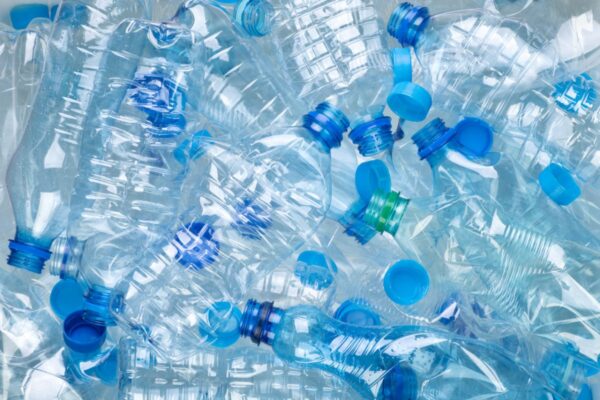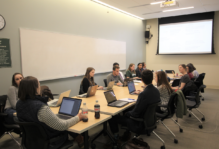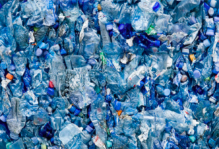Executive Order 77: Eliminating Single-Use Plastics
By Justin Maynard ’23
Last semester I was a Sustainability Ambassador with the Office of Sustainability. After completing a project as a Sustainability Ambassador in the Spring 2021 semester on the ISO 20400:2017, a standard for sustainable procurement, I wanted to complete another project on sustainability integration and standards at William & Mary. This opportunity presented itself when Governor Northam signed Executive Order 77 (EO 77) in 2021. For my project I researched Virginia’s EO 77, providing two case studies, one detailing William & Mary’s response to EO 77 and another detailing the data compiling process along with insights into the data collected for EO 77.
The process began with researching and learning about EO 77, which is a statewide executive order signed by Governor Northam in 2021 with the goal of reducing Virginia’s use of single-use plastics and dependence on sending waste to landfills. This order was developed out of two needs: 1) reducing the use of single-use plastics due to plastics’ low recycling rate, and 2) reducing the strain on Virginia’s landfills. The order pertains to all state agencies, including higher education institutions.
The order is broken up into three parts: cessation, phase-out, and solid waste reduction. Part one, cessation is focused on stopping the buying, selling, and distribution of specific items outlined by Virgnia’s Department of Environmental Quality (DEQ). These items include widely-used plastic items that have readily available more sustainable alternatives, including disposable plastic bags, single-use good containers, single-use straws and cutlery, and single-use water bottles. The next part is a planned phase-out. This step takes place over four years, and requires a 25% reduction in plastic volume each year, to combine for a 100% reduction in plastic waste volume based on weight by 2025. Each item identified must either already meet the alternative requirement of being reusable, compostable, or recyclable or be replaced with an alternative that meets these same requirements. Some items, such as the last phase, solid waste reduction, are meant to help agencies identify and clean up their waste streams, leading to the identification of additional needs and opportunities. Agencies should identify all other waste gathered and generated that was not encompassed by the other two sections of EO 77, becoming more conscious of what is entering the agency’s waste stream.
The next step in my process was detailing William & Mary’s response to EO 77 by looking at William & Mary’s response timeline and specific actions taken to replace single use plastics. William & Mary’s response began with the creation of a working group composed of individuals from Facilities Management, Auxiliary Services, the Office of Sustainability, and Procurement Services. This team worked to complete the DEQ provided template by collecting data through reporting, contacting suppliers, and creating estimations when necessary. In addition, an advisory council for EO 77 was established in June of 2021 and included key stakeholders such as Chief Officers, University Deans, and some professors with relevant experience. In July, William & Mary’s Chief Operations Officer filed as an institution with the DEQ, therefore beginning the cessation of use process.
Lastly, the data collection process was documented. The data collection process began with compiling the cessation of use items in the template provided by the DEQ from individual stakeholders and purchasing entities. With this data, the cessation of use template was filled out, and then combined into a data sheet containing data from all purchasing entities. On July 10th, 2021 William & Mary requested to push back the deadline for cessation of all single use plastic items to no later than December 31st, 2022, which was approved by the DEQ. After the cessation of use template was submitted and approved by the DEQ, the next step was to begin the data collection process for the phase-out plan. Data was collected from all major sources, including procurement eVA (main campus and William & Mary’s Virginia Institute of Marine Science), W&M Dining, Pepsi Auxiliary, childcare, William & Mary Bookstore, Highland, Washington D.C. Campus, and William & Mary Athletics. In order to fill out the DEQ template, the raw data had to be sorted and cleaned which required considerable time, calculations, and estimations completed by Anusha Komati, the university’s sustainability data analyst.
The process of researching EO 77 and collecting information on William & Mary’s response helped me gain a better understanding of how decisions around sustainability improvements are made at William & Mary. Most importantly, this process clearly documented the data compiling and cleaning process, allowing for the process to be replicated and improved upon moving forward. William & Mary’s response to EO 77 is a large step in implementing sustainable change at the university, and the framework and process of William & Mary’s response to EO 77 have helped create a framework for swift and organized responses to future sustainability issues.





No comments.
Comments are currently closed. Comments are closed on all posts older than one year, and for those in our archive.